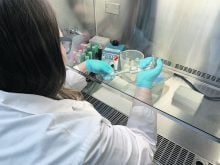The gypsum byproduct from coal-fired plants has a place in farmers’ fields and improving agricultural yields
The mineral gypsum used in drywall and plastering also holds a benefit for crops. Gypsum is concentrated is pockets in the Earth and is usually extracted through conventional mining.
Now, a soil scientist at Ohio State University has found a quicker, more efficient way to obtain high-grade gypsum in large enough quantities to be used in agriculture.
Warren Dick is focusing research on gypsum recovered from coal-fired electricity generating power plants, of which Ohio has many.
“Gypsum is a good source of both calcium and sulfur, which crops need for good yields,” Dick said.
Read Also

Pakistan reopens its doors to Canadian canola
Pakistan reopens its doors to Canadian canola after a three-year hiatus.
“We also found it improves many other soil characteristics. Gypsum helps soil absorb water and reduce erosion. It also cuts down on phosphorus movement from soils into lakes and streams. It improves the quality of various fruits and vegetables. Gypsum as a sulfur fertilizer has benefitted corn, soybean, canola, and alfalfa.”
Gypsum from coal plants is called flue-gas desulfurization gypsum because it comes from the process that “scrubs” sulfur out of the smoke stacks to reduce air pollution, according to a release from the soil science societies.
“The recovered gypsum has good quality. The particles are small and uniform in size making them quite reactive. This can be a real benefit in agriculture. We also determined that it’s safe for agricultural use through many studies. Reusing it for agricultural purposes, instead of putting it in landfills, provides multiple wins.”
In addition to holding calcium and sulfur, the chemical formula of gypsum also makes those nutrients more plant-available than some commercial sources. Chemically speaking, gypsum is calcium sulfate. Its use is often confused with that of lime, which is calcium carbonate.















